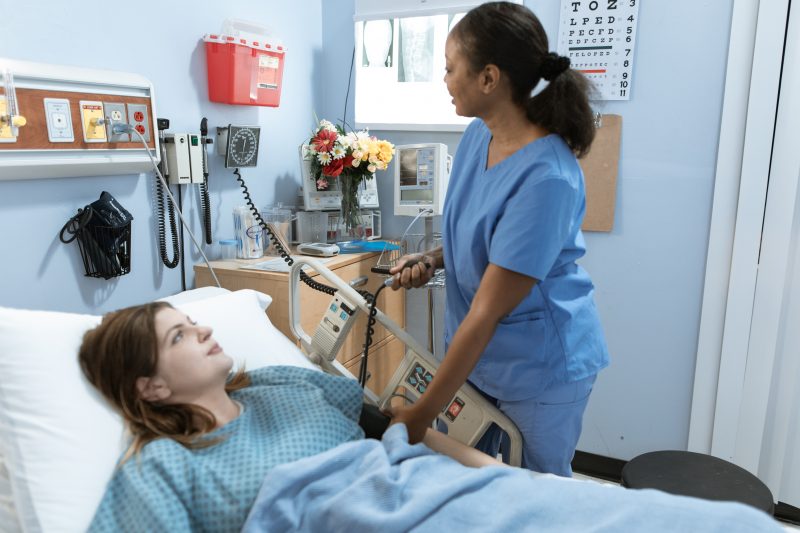Pressure relief is the moving and turning of a patient that spends long periods of time lying in bed, in order to remove continuous pressure and prevent pressure sores. The goal is to redistribute the patient’s weight and prevent further tissue breakdown.
There are many different ways to provide pressure relief, and the frequency with which it is given will depend on the individual’s needs. Some patients may need pressure relief every few hours, while others may only need it once a day.
When to give pressure relief
How often a patient should be moved in order to relief pressure is dependent on their level of risk developing pressure sores. For example, a patient who is unable to move on their own and has very thin skin would be at a higher risk for developing pressure sores and would need to be moved more frequently. However, a patient who is able to move on their own and has thicker skin would be at a lower risk and wouldn’t need to be moved as often.
Who is more likely to develop a pressure sore?
As how often a patient should be moved is dependent on their risk of developing a pressure sore, it is important to understand the risk factors of developing pressure sores.
Risk factors include:
- Limited mobility or unable to change position without help
- Had a pressure sore previously
- Poor nutrition
- Lack of sensation in the skin
- Moisture on the skin
- Skin that is thin, fragile or dry
- Smoking
- Dehydration
How to give pressure relief
In order to give successful pressure relief, a schedule for moving the patient should be implemented. This schedule should be individualised to the needs of the patient. The frequency of pressure relief will depend on the risk factors for developing pressure sores as well as the stage of any existing pressure sores.
Methods for relieving pressure:
- Use medical aids – There are many medical aids that can assist with relieving pressure for patients. These can help the carer to move the patient or position the patient in a way that will remove pressure.
- Support surfaces – This includes anything that the patient lies or sits on that helps to distribute their weight evenly and remove pressure. For example, specialised mattresses and cushions.
- Body positioning – This involves specifically positioning the patient’s body in order to remove pressure. For example, turning the patient from lying on their back to their side.
- Frequent repositioning – This involves regularly moving the patient, even if it is just a small amount, in order to remove pressure. For example, every 2 hours.
Equipment for assisting with pressure relief
Mattresses
If a patient is at a high risk of developing pressure sores, a specifically designed static foam or dynamic mattress. These mattresses are designed to evenly distribute the patient’s weight and reduce pressure.
If a patient already has a very serious pressure sore, a more sophisticated mattress can help with the recovery of the injury. This could be a mattress that is connected to a pump that delivers a constant air flow through the mattress.
Cushions
If a patient is at a moderate risk of developing pressure sores, a pressure-relieving cushion can be used. These cushions can be placed under the patient’s hips, knees or ankles to offload pressure. Pressure relieving cushions are available in different shapes and sizes, to best relieve different body parts.
Pillows
If a patient is at a low risk of developing pressure sores, regular pillows can be used to support the body and relieve pressure.
Satin slide sheets
An important aspect of pressure relief is moving the patient regularly. Satin slide sheets can assist with safe moving of patients. They help to reduce friction and shear when moving a patient. They can also be used to position the patient in order to remove pressure.
Satin slide sheets are placed under the patient and on top of the bed sheets. They have a low-friction surface that helps the patient to move easily and safely.
Positioning wedges
Positioning wedges are also used to help position the patient and remove pressure. They can be placed under different parts of the body, such as the hips, knees or ankles.
There are many different types of positioning wedges available. They vary in shape, size and material. Positioning wedges can be made from foam, gel or air.
Importance of pressure relief
Pressure relief is important in the prevention and treatment of pressure sores. It helps to reduce the risk factors for developing pressure sores as well as improve the healing of existing pressure sores.
When giving pressure relief, it is important to follow best practice guidelines. This will ensure that the patient receives the most effective pressure relief possible.
